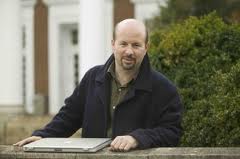Em Cancún, Cientistas do Clima caem em Pânico e Mentem
December 6, 2010
Alarmistas do clima chamam ao racionamento no mundo desenvolvido, embora tudo seja uma farsa.
London Telegraph
Tradução ao Português: Luis Miranda
O aquecimento global é agora uma ameaça tão grave para a humanidade, dizem alguns cientistas, que estão chamando pelo racionamento nos países ricos para reduzir emissões de carbono.
Em uma série de artigos publicados pela Royal Society, físicos e químicos de algumas das instituições científicas do mundo, incluindo a Universidade de Oxford e o Met Office, concordaram que os atuais planos para combater o aquecimento global não são suficientes.
A menos que as emissões sejam reduzidas dramaticamente nos próximos dez anos, o mundo veria as temperaturas subirem mais de 4C (7.2F) até 2060, causando enchentes, secas e migrações em massa.
Enquanto o mundo se reúne em Cancún, no México para a última rodada de negociações das Nações Unidas sobre as alterações climáticas, os acadêmicos influentes pediram medidas muito mais duras para reduzir as emissões de carbono.
Em um documento o professor Kevin Anderson, diretor do Centro Tyndall para Pesquisas sobre Mudanças Climáticas, disse que a única forma de reduzir as emissões globais o suficiente, e permitindo que as nações pobres continuem a crescer, é travar o crescimento económico nos países ricos sobre os próximos vinte anos.
Isso significaria uma mudança drástica no estilo de vida para muitas pessoas em países como a Grã-Bretanha, onde toda a gente vai ter que comprar menos bens e serviços, tais como voos de longo curso e abastecimento de carros.
O Professor Anderson admitiu que “não seria fácil” convencer as pessoas a reduzir o seu consumo de bens.
Ele disse que os políticos devem considerar um sistema de racionamento semelhante ao introduzido durante o “tempo de crise” na década de 1930 e 40.
Isto poderia significar um limite sobre o uso de electricidade para que as pessoas sejam forçadas a diminuir o aquecimento, desligar as luzes e substituir os velhos equipamentos eléctricos como refrigeradores enormes com modelos mais eficientes. Produtos que venham do exterior podem ser limitados e os bens que requerem muita energia para a sua fabricação tambem.
“A Segunda Guerra Mundial e o conceito de racionamento é algo que precisamos considerar seriamente se queremos enfrentar a escala do problema que enfrentamos”, disse ele.
O Professor Anderson insistiu em que parar o crescimento no mundo rico não significa necessariamente uma recessão, ou pior estilo de vida, isso significa apenas fazer ajustes no cotidiano, tais como a utilização de transportes públicos e vestir um suéter ao invés de ligar o aquecimento.
“Eu não estou dizendo que temos de voltar a viver em cavernas”, disse ele. “Nossas emissões foram dez menores dez anos atrás e vivemos bem então.”
A última rodada de negociações em Copenhague no ano passado terminou em um acordo político para manter a fraca elevação da temperatura abaixo do ponto perigoso e decisivo de 2C (3.6F).
Desta vez, 194 países se reúnem novamente para tentar fazer o acordo juridicamente vinculativo e fixar objetivos de redução de emissões.
No momento os esforços estão focados na tentativa de levar os países a reduzir as emissões em 50 por cento até 2050 em relação aos níveis de 1990.
Mas o Dr. Myles Allen, do Departamento de Física da Universidade de Oxford, disse que isto pode não ser suficiente. Ele disse que se as emissões não descerem o suficiente até mesmo uma ligeira alteração na temperatura vai ser muito rápido para os ecossistemas. Também, por medição das emissões em relação a uma referência especial, ao invés de colocar um limite sobre o montante total que pode sempre ser bombeado para a atmosfera, existe o perigo de que o limite seja ultrapassado.
“O aquecimento de pico é determinado pela quantidade total de dióxido de carbono que lançamos na atmosfera, não a taxa que é liberada em um determinado ano”, disse ele. “As alterações climáticas, no entanto, também dependem de quão rápido o planeta está se aquecendo, não só do calor que recebe, e a taxa máxima de aquecimento não depende da taxa máxima de emissão. Não é apenas o quanto emitem, mas o quão rápido o fizermos. “
Outros trabalhos publicados sobre ’4 C e mais além “na Philosophical Transactions of the Royal Society A avisam da subida do nível do mar, secas nas bacias hidrográficas e migrações em massa.




